Authors: Iusupova Tevriz, Vasilev Evgenii
Germany is one of a few countries that fully funds higher education for all of their students. And by all, we mean not only citizens but everyone outside Germany and even outside EU. This policy acts as a great equalizer and If there are no monetary constraints, does it mean that all the groups of the population are equally represented? With the data from Federal Statistical Office (Statistisches Bundesamt) of Germany, we can answer the question of how female to male ratio of students was changing between 1999 and 2016 and did it differ among Foreign students and local ones.
According to the data, there was a steady growth in a number of students in German universities from 1999 to 2016.
Interactive versions of all plots can be found here.
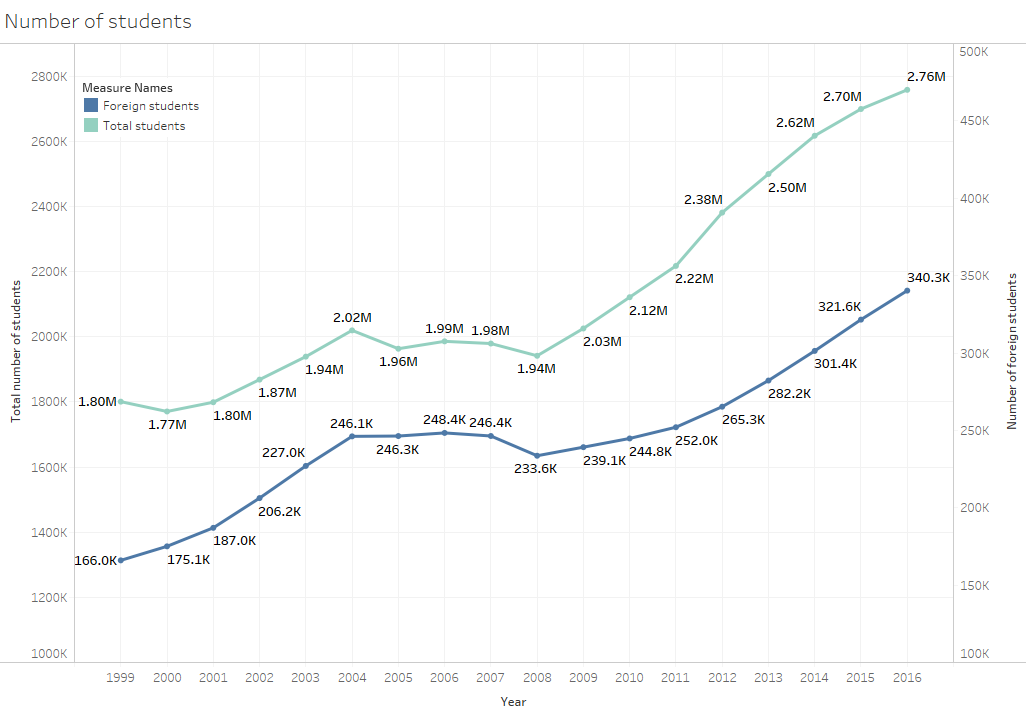
Even though the population of Germany remained the same in last 17 years, the total amount of students in Germany increased by almost 1 million.
For most developed nations the gender balance in universities is skewed towards females. In Australia, UK and United States females are more likely to get a higher education than males and they usually represent about 55% of student population.The situation in Germany is a bit different. In 1999 male students were in a majority with 56% share, but by 2016 their share dropped to 52%. And given the fact that in the age group 15-54 in Germany there are 50.7% males, one can say that gender ratio is close to representing the current demographic.
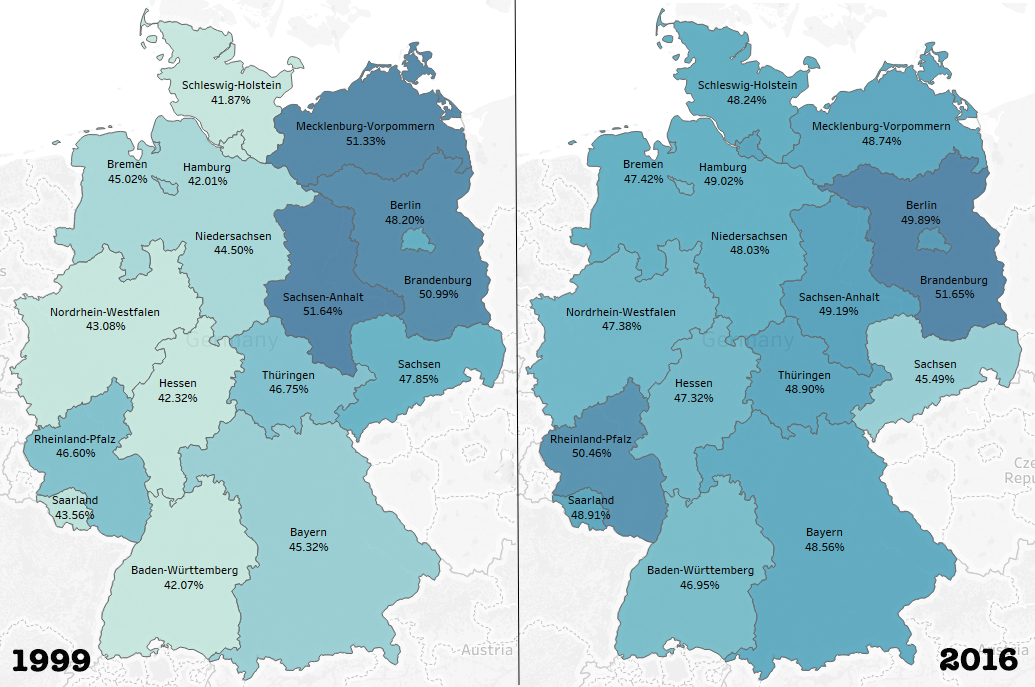
If we will look into a regional map of Germany we can find that former Eastern states in 1999 had a significantly higher share of females than their western counterparts, but by 2016 everything smoothed out and their difference is no longer visible.
The share of foreign students increased from 9.2% of the total student population in 1999 to 12.3% in 2016. But in a total amount of foreigners who were pursuing their degrees in German universities more than doubled and went from 166 to 340 thousands over that period.
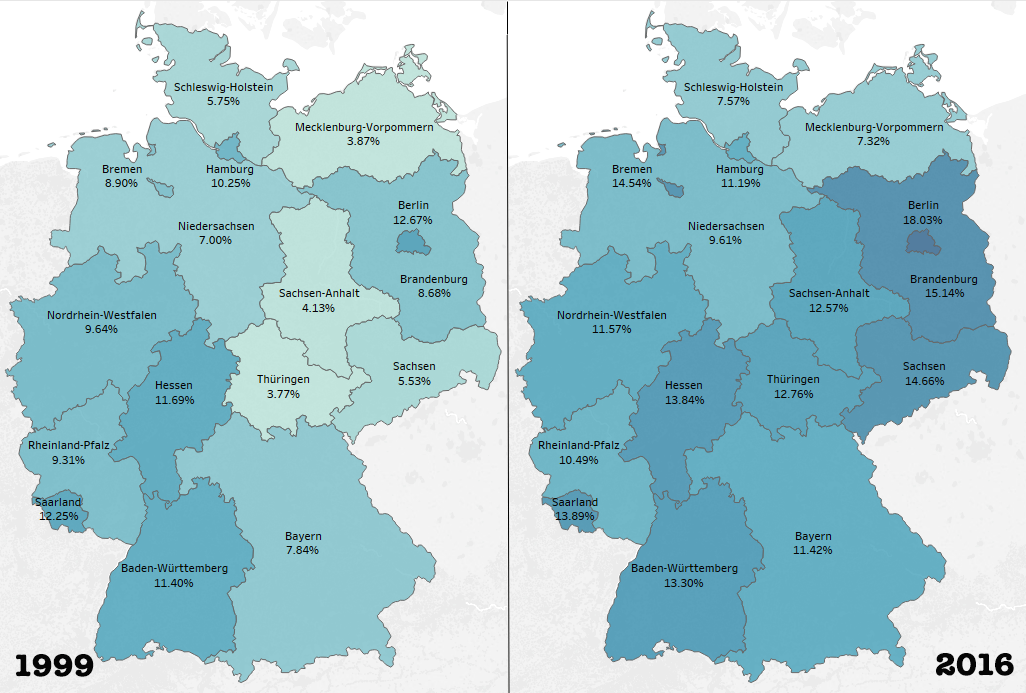
All states showed an increase in foreigner’s presence, but most significant improvements were made by former Eastern states. Most of them were behind the country in 1999, but in 2016 the share of foreign students became higher that national average. Berlin is a global city with a very international population, which leads to high proportions of foreign students locating there. Today, almost every 5th student in Berlin came from abroad, which is the highest rate among German states.
This animation can give you a perspective on how student population of each German state was changing over last 17 years. The size of a circle stands for the total number of students in a state.
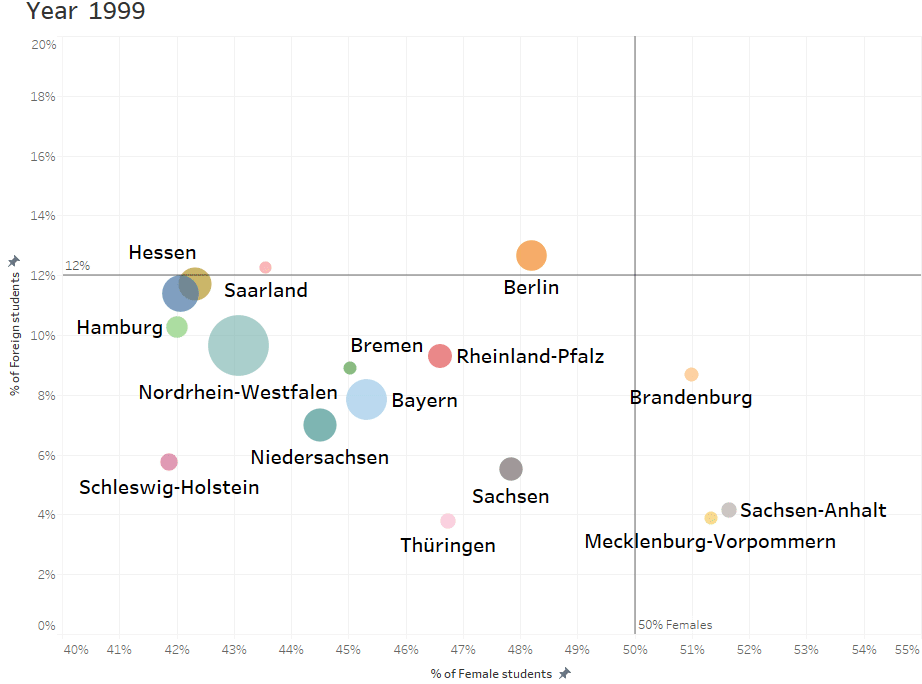 Change in shares of female and foreign students in German states. This next plot should help us answer the question about the difference in two groups of students: Foreigners and Germans. The chart represents the difference in gender balance between foreign students and the local ones. If the value is larger than zero, then German students have a higher share of females than foreign ones in a given state. The black line represents the average value by the whole country. For the purpose of visualization, we decided to focus on a few states.
Change in shares of female and foreign students in German states. This next plot should help us answer the question about the difference in two groups of students: Foreigners and Germans. The chart represents the difference in gender balance between foreign students and the local ones. If the value is larger than zero, then German students have a higher share of females than foreign ones in a given state. The black line represents the average value by the whole country. For the purpose of visualization, we decided to focus on a few states.
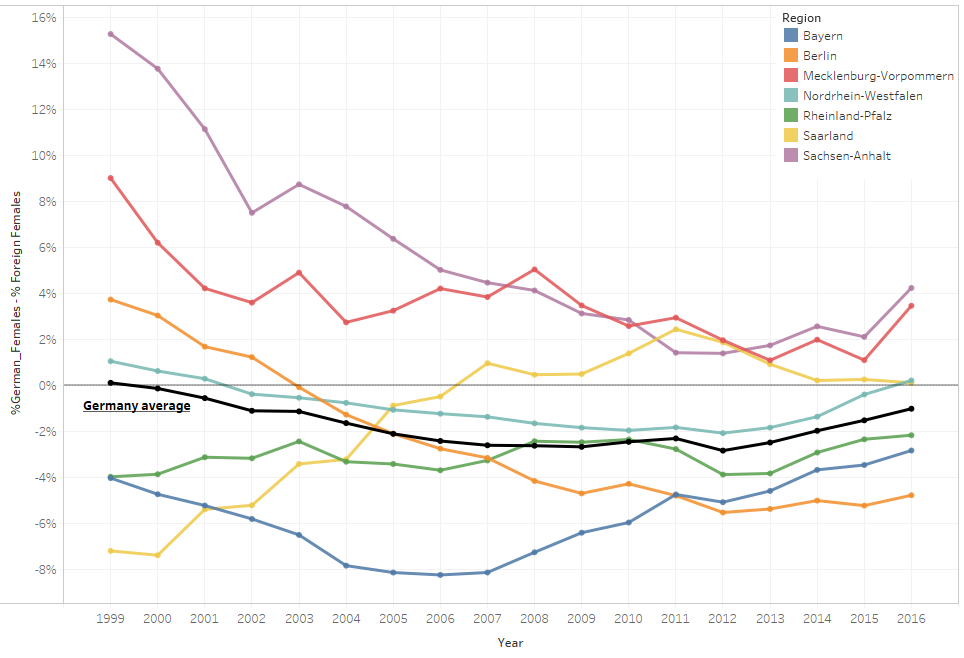
Some German states, like Rhineland-Pfalz in which our university is situated, have a stable negative difference over a whole period of observation. It means that in our state the female to male ratio is higher among foreign students by about 3%. Berlin started off with the positive difference, but in 2003 the difference became negative and never turned back. The nationwide average also shows negative values during the selected period, with the exception of 1999, when the value was at zero.
Summary:
The data shows that there are few major trends in German higher education:
- The number of people getting a higher education is growing over time.
- A steady growth of a number of international students, which will lead to a higher internationalization of German society.
- A share of females among students is approaching the nationwide average in all German states.
- The international students tend to have a higher female to male ratio, but it looks like the difference will disappear eventually.
Authors: Iusupova Tevriz, Vasilev Evgenii
University Koblenz-Landau
Be First to Comment